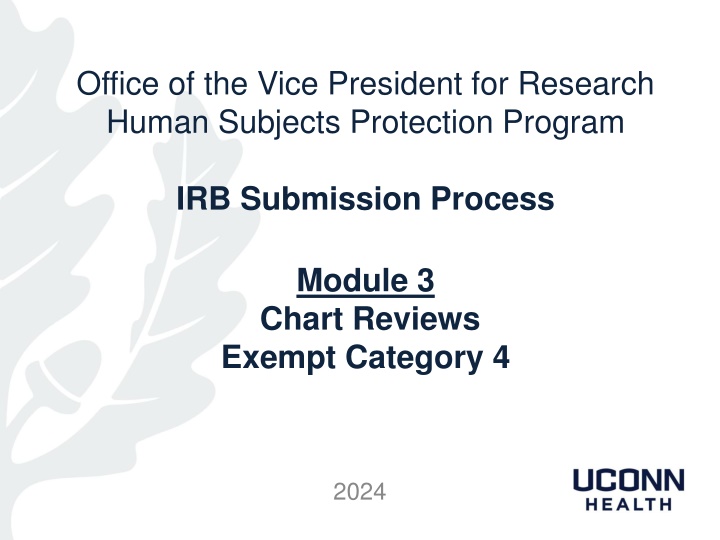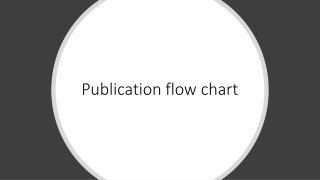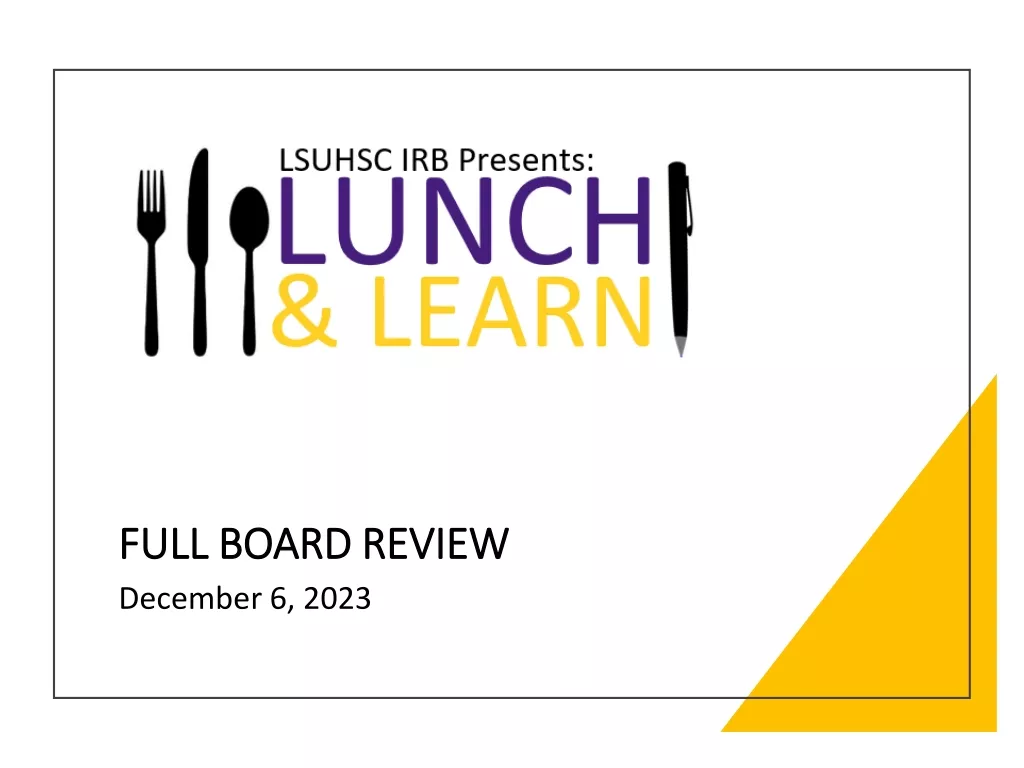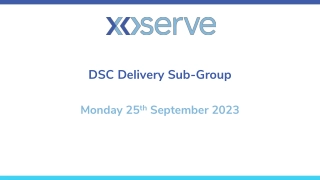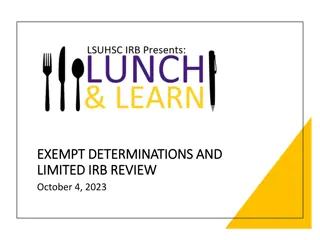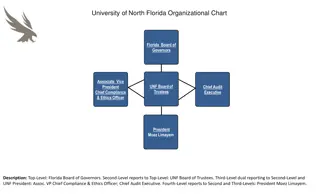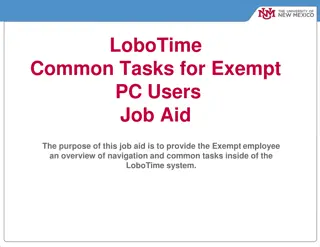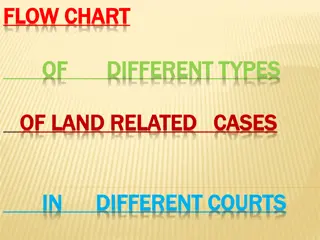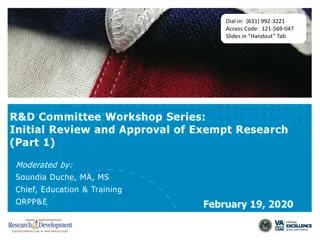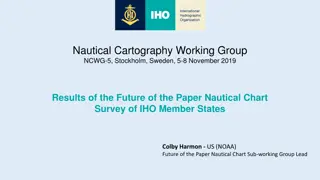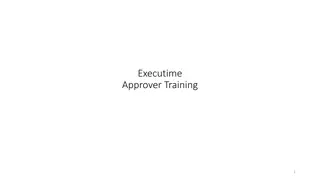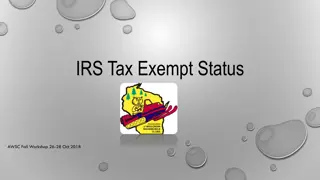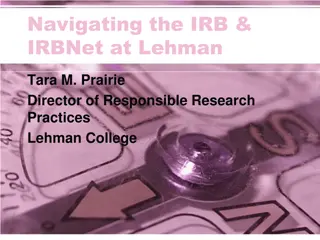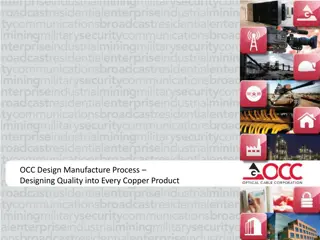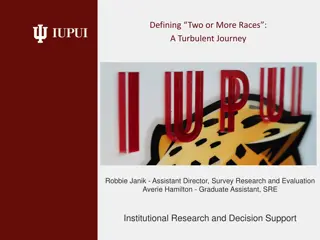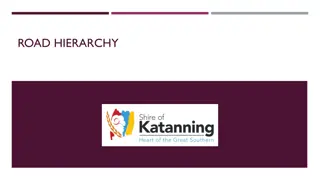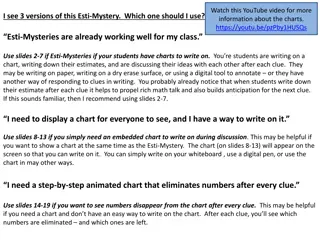Overview of Chart Review Research for Exempt Category 4
Chart review research involves reviewing data for research purposes. Exemption Category 4 outlines criteria for secondary research not needing consent. Understanding these guidelines is crucial for IRB submissions.
Download Presentation

Please find below an Image/Link to download the presentation.
The content on the website is provided AS IS for your information and personal use only. It may not be sold, licensed, or shared on other websites without obtaining consent from the author.If you encounter any issues during the download, it is possible that the publisher has removed the file from their server.
You are allowed to download the files provided on this website for personal or commercial use, subject to the condition that they are used lawfully. All files are the property of their respective owners.
The content on the website is provided AS IS for your information and personal use only. It may not be sold, licensed, or shared on other websites without obtaining consent from the author.
E N D
Presentation Transcript
Office of the Vice President for Research Human Subjects Protection Program IRB Submission Process Module 3 Chart Reviews Exempt Category 4 2024
Please review the content of Module 1- Common Steps for All Submissions prior to reviewing this presentation. 2
Chart Review Research A research activity that is limited to a review of data (e.g. a chart review) will most often qualify for exempt status because there is no more than minimal risk involved. To qualify for exemption the data to be reviewed must initially be collected for a purpose other than the research (e.g. data collected for clinical care purpose and subsequently reviewed for research). The IRB will determine if the research qualifies for exempt status and reserves the right to require a higher level of review. For example, a chart review study aiming to review and collect data about prisoners may need review by the convened board. Because most chart review research qualifies for exemption, this presentation is intended to serve as a general guideline to complete the final steps (Steps 7 and 8) for an IRB submission for a Chart Review Study under Exemption Category 4. 3
Exemption Category 4 Exemption Category 4 is defined as follows: Secondary research for which consent is not required: Secondary research uses of identifiable private information or identifiable biospecimens, if at least one of the following criteria is met: The identifiable private information or identifiable biospecimens are publicly available; Information, which may include information about biospecimens, is recorded by the investigator in such a manner that the identity of the human subjects cannot readily be ascertained directly or through identifiers linked to the subjects, the investigator does not contact the subjects, and the investigator will not re-identify subjects; The research involves only information collection and analysis involving the investigator s use of identifiable health information(not biospecimens) when that use is regulated under 45 CFR parts 160 and 164, subparts A and E, for the purposes of health care operations or research as those terms are defined at 45 CFR 164.501 or for public health activities and purposes as described under 45 CFR 164.512(b); or The research is conducted by, or on behalf of, a Federal department or agency using government-generated or government-collected information obtained for non-research activities, if the research generates identifiable private information that is or will be maintained on information technology that is subject to and in compliance with section 208(b) of the E-Government Act of 2002, 44 U.S.C. 3501 note, if all of the identifiable private information collected, used, or generated as part of the activity will be maintained in systems of records subject to the Privacy Act of 1974, 5 U.S.C. 552a, and, if applicable, the information used in the research was collected subject to the Paperwork Reduction Act of 1995, 44 U.S.C. 3501 et seq. Note: Information pertaining to children and/or pregnant women may be included in the data; information about prisoners may be included only when the research aims to involve a broader subject population that only incidentally includes prisoners. 5
Step 7: Complete the Protocol & Other Documents Because every study design is unique it is not possible to provide a list of all documents required. The documents common for a chart review study submitted for review under Category 4 are: The application checklist previously mentioned in Module 1 A research protocol: this is a document which sets out a plan for a research project. A well written protocol works like a road-map. It helps to focus ideas and provides direction to guide a project through all phases of planning, implementation and evaluation of a research activity. Use of UConn Health IRB Protocol template is strongly encouraged. If another protocol format is used the IRB reserves the right to still require completion of this form. NOTE: Protocol Template is available on the IRB website 6
Step 7 : Complete the Protocol & Other Documents , continuation A Request for Exemption Form A Data Collection Form A Certification of De-Identification Form ( When identifiers are not retained) A Waiver of HIPAA ( When identifiers are retained) If applicable : Letter of Permission ( Sample Available) NOTE: Forms and samples available are found on the IRB Website 7
Step 8: Complete the On-line Application in iRIS iRIS is the electronic system used for IRB submissions. The URL is https://imedris.uchc.edu/ The IRB application form is to be completed and the study documents that have been created will be uploaded and attached to this application form. UConn Health employees and Students can log in with their UConn Health user ID and PW. Individuals external to UConn Health who need access should request an account in iRIS by going to the URL and clicking the Request New Account button. 8
Step 8: Complete the On-line Application in iRIS, continuation . Investigators are strongly encouraged to attend an iRIS training sessions before using the iRIS electronic submission system for the first time. To schedule an iRIS training session e-mail irb@uchc.edu. There are iRIS User Manuals available within the iRIS system s Home Page under the Help Button Download The Basics of Project Management Chapter 1 to learn how to build and submit an Initial Submission Form to the IRB. 9
IRB Process After the IRB Application Form has been submitted in iRIS The following section describes the cycle of review once the application and related documents have been provided to the IRB: Once all members of the study team have signed the application the form will be sent to the IRB and a Regulatory Specialist (R.S.) will review the submission. If the R.S. considers the submission to be complete and the content in the documents is appropriate the IRB may grant the exemption and issue an approval letter. If the R.S. finds discrepancies between the content of the documents and /or there are missing documents, the submission will be returned to the study team in a Submission Correction Form or Response Form with a description of the corrections to be made. The study team must make the corrections and resubmit the material to the IRB. The submission will be approved when the study team satisfies all the contingencies imposed by the IRB. It is recommended to submit a closure form when the study has been completed. 10
Questions irb@uchc.edu
